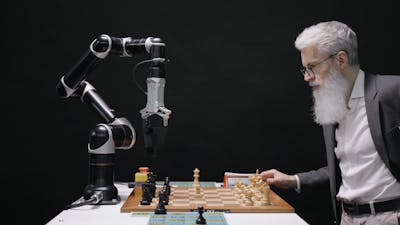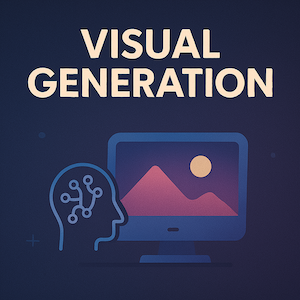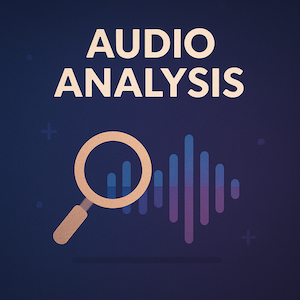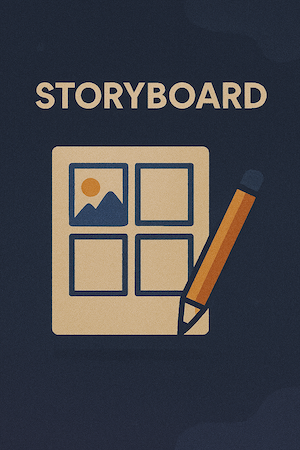Mastering Text Prompts for AI Video Generation
Craft precise, effective prompts that translate your vision into stunning AI-generated videos

The Art and Science of Prompt Engineering
In the world of AI video generation, your text prompt is the blueprint that guides the AI in creating your vision. The difference between a generic result and a stunning, precisely targeted video often comes down to how well you craft your prompts. This guide will help you master the art of prompt engineering specifically for video generation.
What You'll Learn in This Guide
- The anatomy of effective video generation prompts
- How to structure prompts for different types of videos
- Advanced techniques for fine-tuning visual style and movement
- Tool-specific prompt optimization strategies
- Troubleshooting common prompt issues
The Anatomy of Effective Video Prompts
Unlike prompts for still images, video prompts need to account for motion, scene transitions, and temporal consistency. A well-crafted video prompt typically includes several key components:
Subject Description: What or who is the main focus of your video?
Action/Movement: How do elements move or change throughout the video?
Setting/Environment: Where does the action take place?
Visual Style: What aesthetic should the video have?
Camera Movement: How should the camera behave throughout the clip?
Lighting/Atmosphere: What mood or lighting conditions should be present?
Prompt Template Structure
[Subject] [Action/Movement] in [Setting/Environment], [Visual Style], [Camera Movement], [Lighting/Atmosphere]
Basic vs. Advanced Prompt Examples
Structuring Prompts for Different Video Types
Narrative/Story-Based Videos
For videos that tell a story or have a narrative flow, structure your prompts to reflect a beginning, middle, and end. Consider using sequential prompts or keyframes for different scenes.
Example Narrative Prompt Structure
Scene 1: "A young explorer discovering an ancient map in a dusty attic, close-up shot, warm golden lighting streaming through a small window"
Scene 2: "The explorer hiking through a dense jungle following the map, medium tracking shot, dappled green lighting filtering through the canopy"
Scene 3: "The explorer uncovering a hidden temple entrance overgrown with vines, reveal shot starting close and zooming out, dramatic lighting with sun rays piercing through clouds"
Music Videos and Audio-Reactive Content
When creating videos synchronized to music, your prompts should reflect the mood, rhythm, and energy of the audio. Compeller AI excels at this with its audio-reactive capabilities.
Example Music Video Prompt Structure
For a high-energy electronic track: "Vibrant geometric patterns pulsing and transforming to the beat, flowing through a digital space, neon colors against black background, dynamic camera movements that intensify during drops, energetic lighting flashes synchronized with percussion"
For a melancholic piano piece: "Gentle ocean waves washing over a moonlit shore, slow-motion movement, soft blue tones, smooth camera drift, ethereal misty atmosphere with subtle light particles floating in the air"
Product or Promotional Videos
For marketing videos, focus your prompts on highlighting the product's features and benefits in an appealing way.
Example Product Video Prompt
"A sleek smartphone floating and rotating in a minimal white environment, close-up shots revealing key features, clean professional lighting with subtle reflections, smooth camera movements that showcase the product from multiple angles"
Advanced Techniques for Visual Style and Movement
Visual Style Modifiers
Including specific style references can dramatically influence the aesthetic of your video:
Cinematic Styles
- "cinematic wide shot"
- "film noir aesthetic"
- "8mm vintage film look"
- "Wes Anderson symmetrical composition"
Artistic Styles
- "impressionist painting style"
- "anime-inspired"
- "watercolor illustration look"
- "cyberpunk aesthetic"
Technical Styles
- "photorealistic rendering"
- "4K detailed textures"
- "high dynamic range lighting"
- "volumetric fog effects"
Lighting Styles
- "golden hour warm lighting"
- "dramatic low-key lighting"
- "neon glow with strong color contrast"
- "soft diffused daylight"
Camera Movement Vocabulary
Specifying camera movements creates more dynamic and professional-looking videos:
Basic Movements
- "static shot" (no movement)
- "pan left/right" (horizontal movement)
- "tilt up/down" (vertical movement)
- "zoom in/out" (changing focal length)
Complex Movements
- "dolly in/out" (camera moving forward/backward)
- "tracking shot" (following a subject)
- "orbit" (circling around subject)
- "crane shot" (vertical elevation change)
Specialty Movements
- "drone aerial perspective"
- "handheld shaky cam"
- "steady gimbal movement"
- "slow motion capture"
Transitions
- "smash cut to"
- "dissolve transition"
- "match cut between scenes"
- "whip pan transition"
Temporal Control Words
Including words that convey the speed and flow of movement:
- Speed: "slowly," "rapidly," "gradually," "suddenly"
- Continuity: "seamlessly," "continuously," "intermittently"
- Transformation: "morphing into," "evolving from," "transitioning between"
Tool-Specific Prompt Optimization
Different AI video generation tools respond best to different prompt structures and vocabularies. Here are optimization tips for popular platforms:
Compeller AI
Compeller AI excels at audio-reactive content. For optimal results:
Include mood words that match your audio's emotional tone
Use Compeller AI's storyboard feature to create targeted prompts for different segments of your audio
Specify visual elements that should react to beats (e.g., "light flashes synchronized with the beat")
Balance consistency terms with transformation terms for dynamic yet coherent visuals
Other Popular Tools
Runway Gen-3: Favors cinematic language and detailed scene descriptions
Kaiber: Responds well to style references and abstract descriptors
PIKA: Works best with concise, clear descriptions and specific action words
Troubleshooting Common Prompt Issues
Problem: Inconsistent Visuals Between Frames
Solution: Add consistency anchors like "consistent lighting," "stable background," or "maintaining the same style throughout."
Problem: Undesired Elements Appearing
Solution: Use negative prompting with "no [unwanted element]" or "without [unwanted element]" if your tool supports it.
Problem: Too Generic Results
Solution: Add specific, unusual details and avoid clichéd descriptions. Use precise adjectives rather than general ones.
Problem: Chaotic or Too Busy Scenes
Solution: Simplify your prompt and focus on fewer elements. Add terms like "minimalist," "clean composition," or "focused on a single subject."
Prompt Libraries and Frameworks
As you gain experience, consider building your own prompt library or framework:
Style Library: Keep a collection of style descriptions that work well for different moods and contexts
Modular Approach: Create interchangeable modules for subjects, environments, lighting, and camera movements
Template System: Develop templates for different video types (e.g., product showcases, nature scenes, abstract visuals)
Prompt Journal: Document what works and what doesn't in different contexts to refine your approach over time
Beyond Text: Multimodal Prompting
Some advanced AI video tools support multimodal prompting, where you can combine text with other inputs:

Image Prompting
Using reference images alongside text to guide style, composition, or specific visual elements.

Audio Prompting
Using music or sound as input to guide the rhythm and mood of the generated video.

Storyboard Prompting
Using a sequence of images or sketches to guide scene transitions and narrative flow.
Put Your New Prompt Skills to Work
Ready to create stunning AI videos with your newly refined prompt techniques?